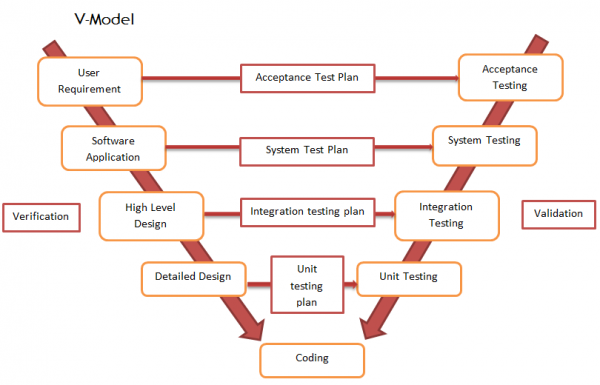
In order to realize all pluses of the development process via V-model, one should consider the peculiarities of this model applying. So, it is better to use it for small and medium projects. For projects of such sort, the specifications are rather detailed, and all nuances of the product itself are described and announced.
V-Model is also utilized when there are enough technical resources, required for creating the product.
What are the advantages of V-model development?
- The methodology is rather simple and easy-to-use.
Software product testing (unit checking, system testing, component checking, integration control, and also acceptance testing, and module testing), designing and planning the checking are performed before conducting the code writing process. Such approach significantly saves time, especially in comparison with waterfall development model.
- Preventive error detection process - the bugs are discovered at the earlier stages of the product development.
- It is effectively applied to small projects requirements to which are available and understandable.

Really, the model is rather efficient, and the final product quality is high. But, nevertheless this model still has its own disadvantages.
What are the weaknesses of V-model?
- The model is not agile.
- The development process itself is executed at the stage of realization, prototyping is not typical for this model.
- If some modifications or changes are made during the process, then all project documentation should also be updated.
On one hand, V-model development ensures a high effectiveness of processes and saves time, on the other hand - there are still certain risks which may negatively affect the final working result.
